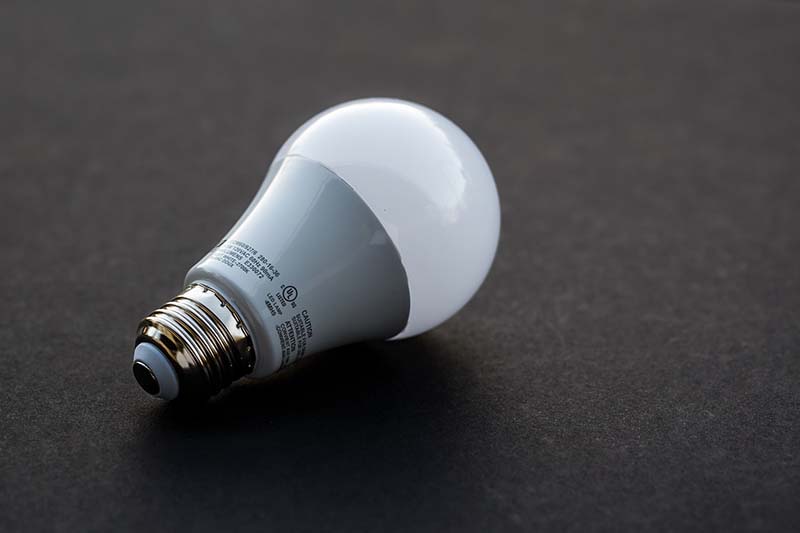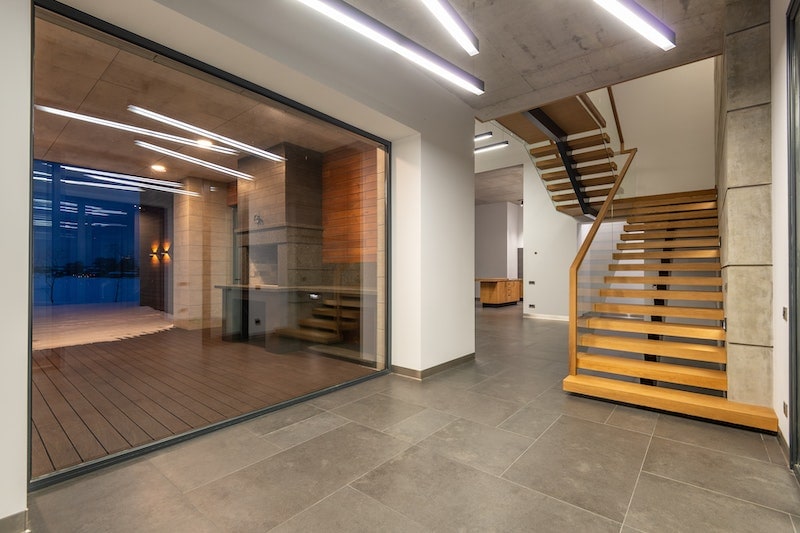Do LED Lights Save Energy? Science-Based Facts & Info
-
Pete Ortiz
- Last updated:

There are infinite choices in the market if you are looking for a new light bulb. Nowadays, LED bulbs are used in almost every home and office because of their excellent light output, high efficiency, and low power consumption. They are also more valuable than fluorescent lamps or incandescent bulbs because they can emit a wide range of colors, thus making house decoration easy.
Out of the total energy that incandescent bulbs consume, only 5% is output as light. But that’s no surprise because such bulbs were invented over 140 years ago and have ceased to exist. In the modern era, it’s hard to recall their time because LED lights have taken all the attention, thanks to their energy-saving capability.
This post walks you through the types of LEDs, how they work, and how different they are from traditional incandescent bulbs. Hang on as we elaborate.
What Is an LED?
LED stands for light-emitting diode, which is a rapidly growing technology in lighting. It is made up of a semiconductor that emits light when electric currents are passed through. A diode has two electrodes— cathode and anode—that allow currents to flow in one direction. As such, we can say that LED lights are directional – that is, they emit light in a specific order.
Let’s take a quick look at how they work.
How Do LEDs Work?
In LED bulbs and LED lights, electric currents flow from the positive end of the diode to the negative. Because it produces light in a directional bias, energy is released through protons (or light packets). The diode’s cathode is connected to the negative end of the power source, and the anode is connected to the positive to allow the flow of current. This connection is known as the forward bias condition.
If the cathode is connected to the positive end of the voltage source and the anode to the negative end, the current will not flow because the connection is a reverse bias. Such contact must be rectified immediately, or the LED cannot maintain the current flow, damaging the device when it reaches the peak inverse voltage.
Why Are LEDs So Energy-Efficient?

Because an LED emits light in one direction while other light products do not, it uses as little energy as possible while producing more light.
Unlike Compact Fluorescent Lamps (CFLs) and incandescent bulbs, LEDs do not have a filament that needs to be burned to emit light. Instead, they have diode lights that produce protons or light particles when they are connected to a power source. For this reason, they utilize 95% of the total consumed energy to produce light, whereas only 5% is lost as heat.
How Much Energy Do LED Bulbs Save?
The quantity of light emitted by a device is measured in lumens. LEDs deliver more lumens per watt than conventional light sources because they have higher luminous efficacy. As a matter of fact, LED lights consume 75% less energy than conventional light sources.
If we assume that you power an LED bulb in your home daily for 5 hours, you will save between $20–$30 in 1 year compared to lighting an incandescent bulb. This is because LEDs are highly energy-efficient, typically using between 2–17 watts of electricity, which is less than their CFL and incandescent counterparts by up to 90%.
How Are LEDs Different from Conventional Light Sources?

Every day, humans keep evolving, and so does technology. There’s an insatiable thirst for living better, giving way to exceptional discoveries and inventions, including LED technology.
LEDs differ from olden sources of artificial light like CFLs and incandescent bulbs in the following aspects:
1. LEDs Produce a Wide Range of Colors
Despite their minute physicality, LEDs emit multiple colors (such as red, amber, blue, and green), which combine to become white. In some cases, the LED lights are covered with a phosphor material to convert the mix of colors to white.
On the other hand, CFLs utilize the electric currents flowing through the electrodes at the end of each gas tube to produce heat and UV light. Also, incandescent bulbs heat a metal filament using electric currents until it becomes white hot, thus producing heat and light.
2. Directional Lighting

While incandescent bulbs and CFLs emit light in all directions, LEDs only emit in a specific direction. This feature limits the amount of light and energy lost if reflectors and diffusers were to be used. This is why LEDs conserve more energy and light, especially when used in task lighting and recessed downlights.
3. Minimal Thermal Dissipation
Before LEDs were devised, conventional light sources posed a great danger to the environment because of their high heat emissions. They would release about 90% of their energy environment to dissipate in the surroundings as heat. Thankfully, we now have LED lights that manage heat using heat sinks to ensure the little amounts emitted are absorbed.
4. A Longer Life

As mentioned earlier, LEDs have no burning parts like filaments that might easily break down after short usage. Instead, they have diode lights that can last for up to 25,000 hours, which equates to almost 3 years of continuous use.
Types of LED Lights
Aside from the commonly known LED bulbs, there also exist LED panel lights and LED tube lights. They all use the diode light concept, but we’ll take a quick look at each one of them:
1. LED Panel Lights
Panel lights are a type of LED light made in the form of a thin architectural marvel. They emit little heat amounts and don’t require regular maintenance. Still, they can last long, sometimes up to 10 years.
In most cases, LED panel lights are used to light up fake ceilings and primary workspace, but they can work excellently in any office. They emit brighter light than a CFL that never dims, and they are enough to help computer users avoid eye strain.
Also worth noting are temperature-dependent panel lights. Such types of LEDs can produce various colors depending on the room’s temperature, ranging from cold daytime to cool daylight to warm white. They let you have a more cheerful experience.
2. LED Tube Lights

Unlike fluorescent tube lights, LED tube lights are friendlier to the environment, produce less heat, are cost-efficient, and require little maintenance. Moreover, they use less power while providing uniform lighting inside the room.
Their positive combinations make them an excellent choice for consumers shopping for LED lights. They are primarily used to illuminate offices with high ceilings since they can brighten a vast space perfectly, but you can use them to light your house too!
3. LED Bulbs
LED bulbs are perhaps the most common LEDs. Besides being environmentally friendly, they conserve energy by utilizing the least amount possible to produce light. The emitted light doesn’t trigger minimal glare or flickering of the eyes.
They also have adjustable switches that allow you to regulate the amount of brightness emitted to match the room’s temperature. You can choose your favorite light color and style with LED lights to make your space more decorative or appealing.
Does the Cost and Quality of Light Bulbs Vary?
Initially, people wouldn’t buy LED lights because they were afraid to shell out extra coins for a light whose brightness was determined by a directional bias. Thus, they preferred CFLs and incandescent bulbs for their broader beams and cheaper market price.
But as the LED technology kept developing, newer models constantly emitted warmer light over more expansive spaces. They could also produce more light using less energy because they would utilize it more efficiently.
When shopping for a light bulb, its energy efficiency is crucial since it determines its cost and quality. For instance, two 1,000-watt bulbs can consume a similar amount of power to produce light (1,000 watts) but both will have a varying level of light. One could produce 2,000 lumens while another emits 500 lumens. As such, you must consider the lumen units of a bulb when comparing different types.
Conclusion
We can safely conclude that LED lights are more energy-saving compared to conventional lighting methods. In addition, they have a low maintenance cost, higher light output, and better efficiency.
LEDs also have other multiple advantages over fluorescent bulbs and CFLs, such as the ability to emit different colors and adjust according to the room temperature. Without a doubt, they are the ultimate go-to choice for light sources.
See also: How Many Watts Does a Lamp Use? Does It Use a Lot of Power?
Featured Image Credit: Karol Olson, Pixabay
Contents



